Aqqaluk Lynge is talking about a previous offer from the US to buy the island as he pores over a map of the Arctic, when a warship suddenly appears outside his window.
“It’s not the Americans,” says the pioneer of Greenland’s home-rule movement with a laugh, looking out on to the fjord in Nuuk. The ageing patrol boat is Danish, intended to protect its sovereignty over the world’s largest non-continental island, an autonomous part of the Kingdom of Denmark.
US president Donald Trump’s renewed interest in taking control of Greenland has thrust this vast, frozen landmass of just 57,000 people into the geopolitical spotlight. Offers to buy Greenland are nothing new – Washington first made enquiries in 1867 – but this latest attempt, in which Trump has refused to rule out using military force against a Nato ally, has thrown Denmark and the EU into crisis.
It also highlights the growing military, commercial and diplomatic interest in the region. A long period of so-called Arctic exceptionalism, during which major powers viewed the region as a low-tension area away from normal geopolitics where rival nations could attempt to find common ground over problems such as climate change, appears to be ending.
READ MORE
Between Russia’s growing militarisation of its Arctic territory, China’s increasing ambitions for trade routes and Trump’s expansionist rhetoric about Greenland, the Arctic is quickly becoming a region of strategic competition. Some have likened it to the Great Game of the 19th century, when Britain and Russia vied for influence over central Asia.
“This is a geopolitical machination,” says Klaus Dodds, an Arctic expert and professor of geopolitics at Royal Holloway, University of London. “It is rooted in the sense of ‘this is a great power struggle’. The US has to ensure at the very least that its western hemisphere is as secure as it can be.”
Experts say that Russia and China have been thinking about the military and business challenges, or opportunities, thrown up by the Arctic for more than a decade.
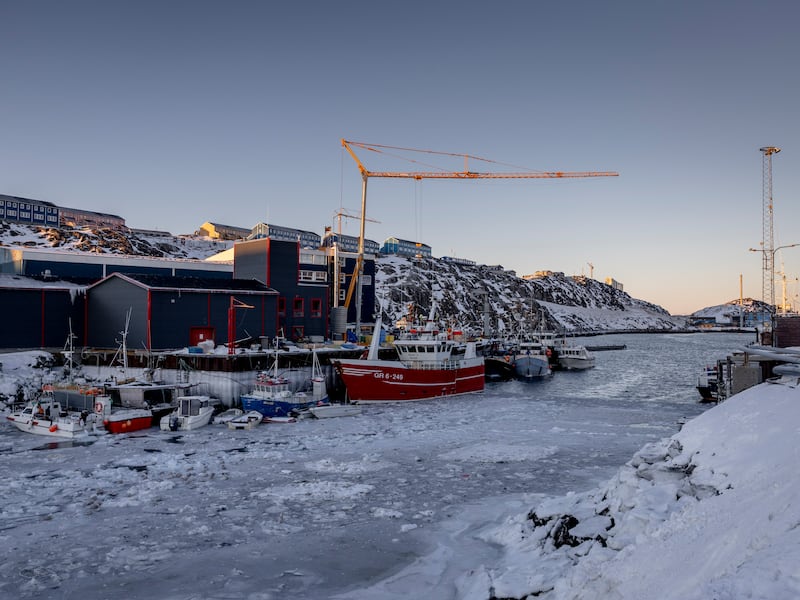
The US seemed largely uninterested until the end of Trump’s previous presidency in 2019. “There was a real vacuum when it came to the Arctic from the US for a long time,” says Anna Wieslander, director for northern Europe at the Atlantic Council think-tank.
“We had Russians there, we had Chinese there, and they were both very engaged. The US really didn’t have anything – no strategy, no icebreakers, little in Alaska militarily,” she adds. “The US is waking up to a new reality.”
US vice-president JD Vanc declared recently that Greenland was “really important” to US national security. “There are sea lanes there that the Chinese use, that the Russians use,” he said, adding that Denmark was “not doing its job, and it’s not being a good ally”.
In Greenland itself, there is a recognition that it can no longer stand apart from international rivalries, despite its identity as a haven from geopolitics. “We are nervous about the situation, but we think we can manage,” says Lynge, a founder of Inuit Ataqatigiit, Greenland’s largest political party. The Americans “should accept us as the guardians of the Arctic”, he adds.
Vivian Motzfeldt, Greenland’s foreign minister, acknowledges the island’s strategic location as her government pushes for independence from Denmark. “We are right smack dab in the middle of what is going on in the Arctic. Our belief has always been that the Arctic should be a low-tension area,” she adds.
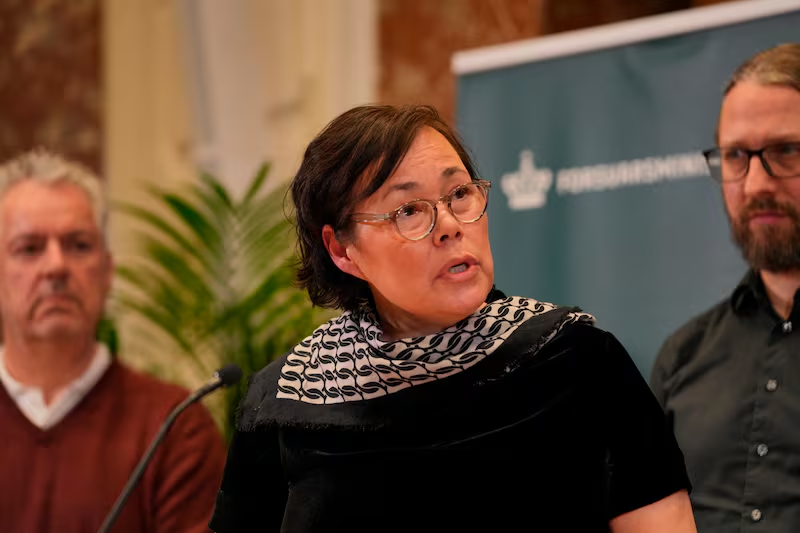
Foreign policy experts say Trump’s pitch for Greenland in part reflects some of the hype that often abounds in the Arctic. But they also think his bluster – not just about Greenland but also Canada and the Panama Canal – represents a belief in the concept of spheres of influence. If so, it is a world view strikingly close to that of the presidents of Russia and China.
All this suggests that the furore over Greenland is both serious and a sign of more to come in the Arctic, as climate change more rapid than in any other region on Earth potentially makes its shipping routes and mineral deposits more accessible.
“Arctic exceptionalism doesn’t exist any more,” says Kuno Fencker, a Greenlandic MP who has recently met several Trump associates and wants his homeland to be independent.
“It is utopia to think about a sovereign Greenlandic state without the US being involved in some way.”
***
The warship outside Lynge’s house could serve as a symbol for Copenhagen’s tricky relationship with Greenland.
Together with a single surveillance plane and some dog sled patrols, it is meant to protect a prime piece of Arctic territory roughly the same size as western Europe.
But for more than a decade until recently, the vessel’s guns were useless as they lacked a crucial targeting system, public broadcaster DR revealed last year. Denmark’s defence minister, Troels Lund Poulsen, conceded in December that the Nordic country had not spent enough on defending Greenland.
Denmark and Greenland jointly plan to spend $2 billion (€1.9 billion) on the military in the Arctic, including replacement ships and drones. “There is a big portion of our country where there is no supervision now. We are trying to have surveillance over the whole country,” says Motzfeldt.
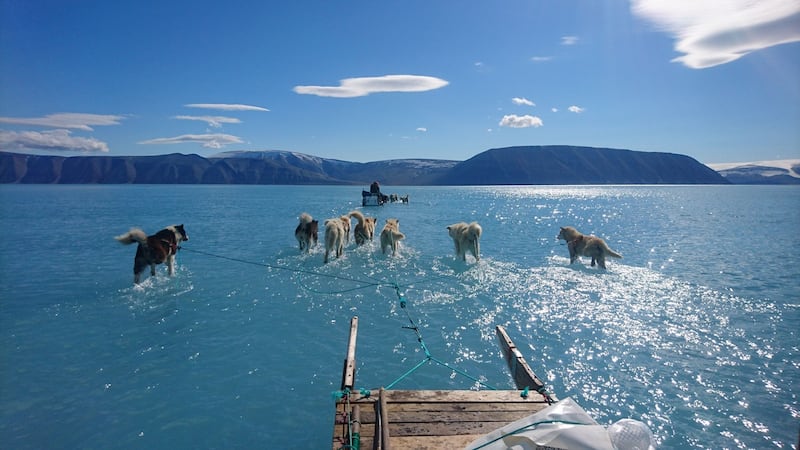
Trump and his officials have ridiculed the dog sled patrols. But Greenlanders, many of whom are Inuit hunters and fishers living in isolated settlements of pretty wooden buildings along its vast coastline, point out that their country is difficult to defend or attack because most of it is uninhabitable.
“You can’t invade Greenland,” says Lynge, laughing again. None of its more than 50 coastal settlements are linked by roads. Despite global warming, winters are still very cold, making business activities such as mining or tourism viable mostly in the summer months.
The US has the sole military station on Greenland, the Pituffik Space Base in the northwest. “It’s the US that is protecting us. It’s the US that is defending us,” acknowledges Vittus Qujaukitsoq, a former finance and foreign minister. But he does not see why the Americans need to own the island. “They can have more bases if that is what they are asking for.”
The US’s military presence has in fact declined since the end of the cold war. Pituffik is used for missile warning and satellite and space surveillance, not to defend Greenland itself.
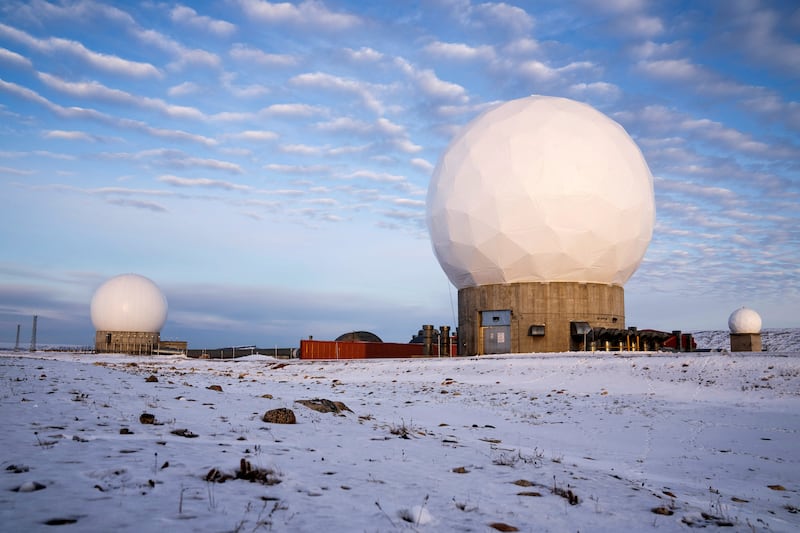
“If it’s so important to have military presence in Greenland, why do they have only 150 troops? They used to have 15,000,” says Rasmus Jarlov, a former Danish minister and current Conservative MP. “It’s their choice. We didn’t ask them to leave. They themselves have decided to scale it down.”
Greenland’s government may have rebuffed the idea it is for sale, but it is keen to attract US investors. “We would like to have a closer co-operation with the US and we’ve been saying that for years,” says Aaja Chemnitz, one of two Greenlandic MPs in Denmark’s parliament. “But we’ve only got one US investor in minerals.”
Mining has drawn most of the headlines due to the large amounts of minerals buried beneath Greenland. But officials in Nuuk say tourism has the biggest potential as they try to entice those visiting Iceland and northern Norway to sample something even more remote.
“We are getting a lot of positive publicity [from Trump]. We are going to have more visitors this summer, for sure,” says Christian Keldsen, head of the Greenland Business Association.
But with a population that would fit into “a small Premier League football stadium”, according to Dodds, labour supply is an issue.
“Job creation isn’t necessarily positive. Since nobody is unemployed, a project for 300 people takes that from existing projects – and then suddenly I can’t repair my house,” says Keldsen.
Securing more autonomy from Denmark is “going to need a sustainable source of income”, he adds.
***
China may be separated from the Arctic by the vast emptiness of Siberia, but it still regards itself as a “near-Arctic” power and published a strategy paper on the area in 2018.
“The Chinese are intensely following how the ice is melting, and they are preparing,” says Wieslander, of the Atlantic Council, pointing to their icebreakers and submarines.
After Denmark, China is the second-biggest destination for Greenland’s exports, which consist mostly of fish. But Wieslander adds that Beijing has have been less successful in its Arctic business efforts, such as trying to gain control of airports in Greenland and Finland, or large swathes of land in Iceland. “We don’t like big powers coming in,” she says.
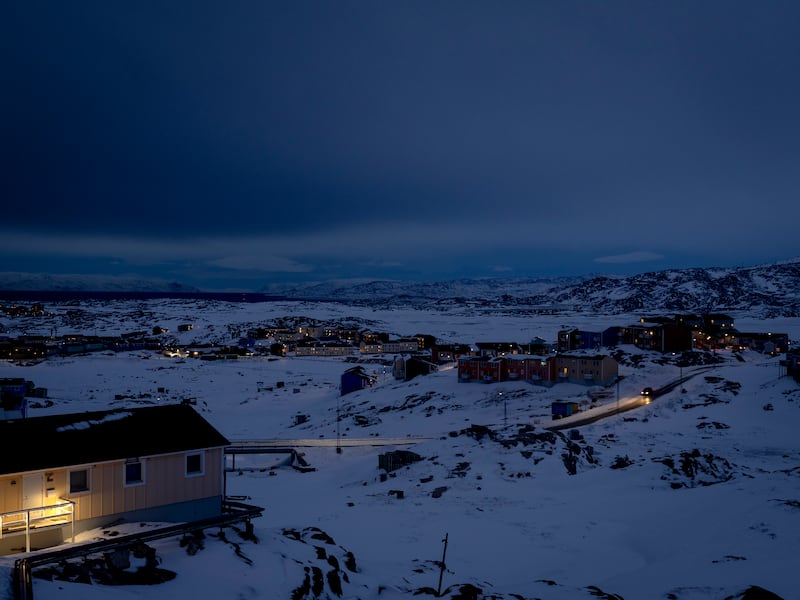
Naaja Nathanielsen, Greenland’s minister for business, trade, natural resources, justice and gender equality, says there have been “lots of rumours regarding Chinese involvement in the Arctic”.
“I think there was a fear at some point it would be like in Africa where they do have a lot of infrastructure projects,” she adds. “They have shown interest in the past. You don’t see it a lot right now.”
Marco Rubio, Trump’s new secretary of state, is more sceptical, arguing in a recent interview with SiriusXM radio that China could yet try to do what it has done “in the Panama Canal and other places” by investing in commercial projects that have potential military uses.
But for all the talk about China, it is Russia that has probably been the most active power in the region. Moscow has trumpeted the potential of its own 24,000km Arctic coastline for both trade and military uses.
In 2021, it brought a group of journalists to its northernmost base on Alexandra Land, an island of blizzards and polar bears in the Arctic Sea, where Russian soldiers maintain missile and radar systems.
It has also sought to co-operate with China in the Arctic, both in shipping and in military matters, such as a joint bomber exercise near Alaska in July that surprised western security officials.
With former US president Joe Biden distracted by events in Ukraine during much of his term, “China has been able to become a serious Arctic power, and Russia has aided and abetted this. It’s never been about just Greenland. It’s about hemispheric security”, says Dodds, the University of London professor.
A potential source of tension between Russia, China and the West is the gradual opening up of new shipping routes through the Arctic. Mariners have long looked at the northwest and northeast passages as ways of shortening distances between Asia and the West.
Climate change is now making these routes easier to navigate. The Northwest Passage, which begins to the west of Greenland, is still largely ice-bound but what Moscow calls the Northern Sea Route, the northeast passage above Russia, is navigable for parts of the year.
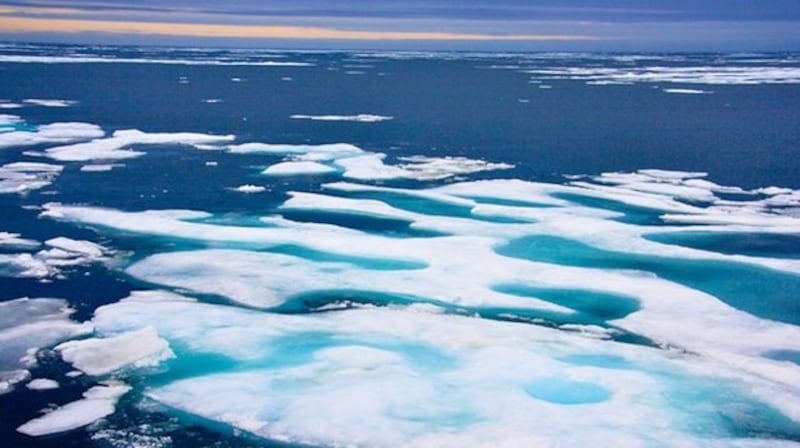
Volumes through that corridor hit a record high of 38 million tonnes last year, though that was still less than half the amount Russia had targeted. It represents just 2-3 per cent of the volumes sent through the Suez Canal in 2023, before traffic there was disrupted by Houthi attacks on shipping.
Trump has also talked of Russian and Chinese submarines around Greenland, something experts judge a possibility, though Greenlanders themselves say they have seen no Chinese or Russian vessels of any kind recently.
But one former prime minister of an EU member state describes fears of Chinese military and commercial activity in the Arctic as “ludicrous”, adding that the Americans are “hyping themselves up over the Chinese threat. It’s fantasy land, and it’s dangerous”.
Jarlov, the former Danish minister, says that while Greenland is an important monitoring station for the GIUK gap, referring to the sea in between Greenland, Iceland and the UK, it has little intrinsic military value.
“Nothing would be achieved by invading Greenland in a war between the West and Russia,” he says. “You would just freeze to death.”
***
The rising big-power interest in the region has left the Arctic Council, long the anchor of Arctic exceptionalism, facing existential questions.
After Russia’s illegal annexation of Crimea in 2014 the body – which consists of the eight countries present in the region as well as multiple “observers” such as China – remained a forum where western powers could talk to Moscow calmly.
That changed in 2022 with Russia’s full-scale invasion of Ukraine, after which the council’s seven western countries – the US, Canada, Norway, Denmark, Sweden, Finland and Iceland – paused all official work.
The Nordic states and Canada are keen to try to keep the Arctic as a low-tension area divorced from global politics. But by invoking Greenland, alongside Canada and Panama, the Trump administration seems increasingly to be talking about its own “sphere of influence”, according to both Wieslander and Dodds.
“It’s worth taking seriously. What kind of order do we want? Where are we heading with this?” asks Wieslander. She says the more belligerent US stance “doesn’t resemble how Europe looks at the world; unfortunately it looks more like the way Russia looks at it”.
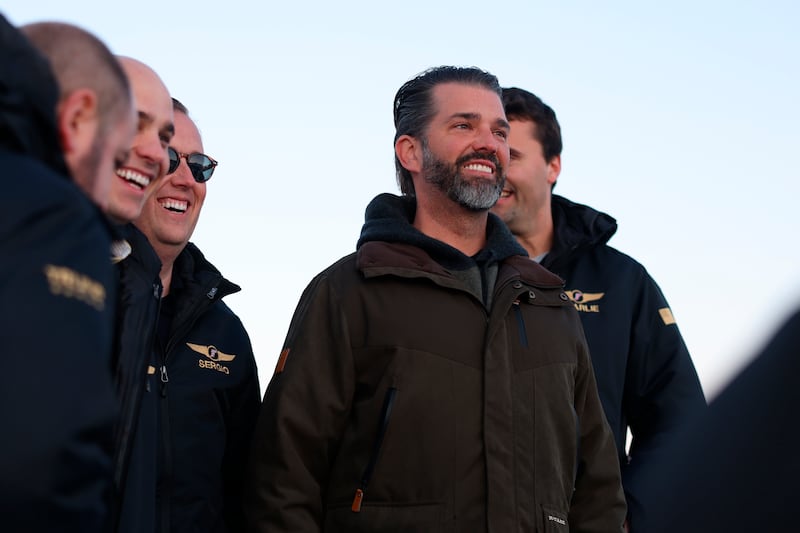
Dodds adds that the repercussions could be felt far away from the Arctic. “Taiwan should worry about Greenland. Ukraine should worry about Greenland. If the US is saying, ‘Back off, Greenland is in the American sphere of interest,’ it’s utter big picture stuff,” he adds.
Back in Nuuk, Lynge turns to the map once more to reflect on how Greenland became caught up in a much bigger game. He refers to the 1946 attempt by the US to buy Greenland from Denmark, under which one proposal was for it to be swapped for land in Alaska that was later found to be rich in oil.
“That is how primitive their thinking is,” says the Greenlander, before turning to today’s situation. “Here we have a US president with no borders at all, both psychologically and politically.
“It must be like seeing Rome burn down. It’s so incomprehensible.” − Copyright The Financial Times Limited 2025
- Sign up for push alerts and have the best news, analysis and comment delivered directly to your phone
- Find The Irish Times on WhatsApp and stay up to date
- Our In The News podcast is now published daily – Find the latest episode here



















